The last couple of days I have been testing the new Windows server 2012 Operating System from Microsoft. As you maybe already know it is built on the same code platform as Windows 8 also introducing Tiles instead of the classic desktop from earlier editions of Windows Server. Just like in Windows 8 the classic desktop is still there, but the Start Menu has gone. If you want to test it yourself you can Download a free 180 days evaluation copy of Windows Server 2012 For my test environment I use VMware Player to create a virtual server on top of my Windows 7 Installation.
These are the new features in Windows server 2012 I will cover below:
- New Active Directory Administrative Center
- DCPromo relocated to the Server Manager
- Only 2 Editions available (Standard and Datacenter)
- Internet Information Services 8.0 (IIS8)
- New version of Hyper-V
- Support of ReFS FileSystem (Resilient File System)
New Active Directory Administrative Center
One of the first new features I came across after installing Active Directory on my test server was the Active Directory Administrative Center. It is installed automatically, when you promote a server to a domain controller and is kind if the new place to go for user administration. If you prefer to use the old Active Directory Users and Computers it is still there.
DCPromo had been relocated to the Server Manager
When I was trying to promote my test server to a domain controller I noticed that the normal dcpromo.exe command has been relocated to a new wizard inside the server manager. The entire process of installing AD and promoting a server to Domain Controller can now be done via a GUI wizard. The dcpromo.exe command is still there, in case you need to make an unattended installation.
Only 2 Editions (Standard and Datacenter)
The new Windows Server 2012 is at this moment only available in a Standard and a Datacenter edition. In compare Windows 2008 was available in 6 different editions. It seems like Microsoft wanted to simplify the whole thing with just 2 editions. I think that a lot of people are going to miss the cheaper web edition that was introduced in Windows server 2008.
Internet Information Services 8.0 (IIS8)
Windows Server 2012 includes the new Internet Information Services 8.0. The new IIS8 has a lot of new cool features under the hood. One of them is Dynamic IP address filtering. With this feature you can dynamically configure your server to block access for IP addresses that exceed the specified number of requests. A similar solution is available for FTP, with FTP Logon Attempt Restrictions. With this built-in feature it is now a lot easier to prevent brute-force attacks on your server.
New improved version of Hyper-V
With Windows Server 2012 there is also a new Hyper-V. Unfortunately I have not been able to install it in my test environment, because I am already running this server on a virtual platform (VMware Player). Some of the thinks that has been upgraded with this new version is support for larger installations. With the new Hyper-V server it can manage up to 320 logical processors and 4 terabytes of RAM; the virtual hosts running within the hypervisor can be configured with up to 64 virtual processors and a terabyte of RAM, and virtual disks can be configured to sizes ranging up to 64 terabytes (thanks to the new VHXD format for virtual drives, introduced in Server 2012). A single instance of Hyper-V can run up to 1,024 active virtual machines. As in earlier versions Hyper-V is free when you have first bought your Windows Server 2012.
Support of ReFS FileSystem (Resilient File System)
Windows Server 2012 supports a new FileSystem called ReFS. ReFS are the next generation of the old NTFS and support many of the same features. ReFS are resilient to various types of failures than NTFS. When it updates a file it writes the date to a new part of the disk instead of overwriting the old data. In case of a power failure you will not lose any data. Unfortunately, ReFS isn’t suitable for all situations. It cannot be used on boot devices or removable devices and it does not support EFS and compression of your files as NTFS does.
Windows Server 2012 System Requirements
- 1.4 GHz 64-bit processor
- 512 MB RAM
- 32 GB Disk Space
- Super VGA (800 x 600)
- DVD drive for installation
Screenshots of some of the new features in Windows Server 2012:
I hope you enjoyed this little intro to Windows Server 2012 and I would love if you will drop me a comment below.

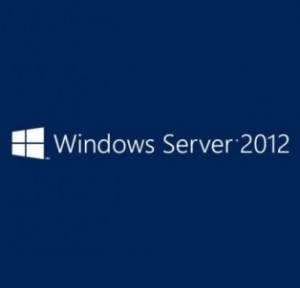

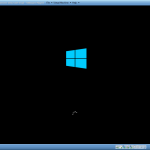
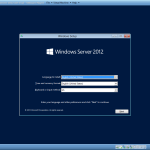
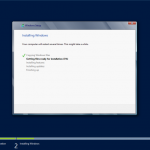
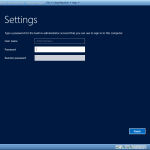
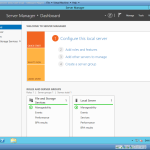
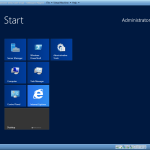
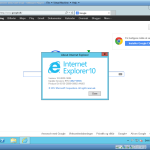
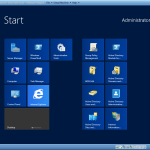
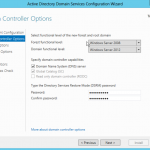
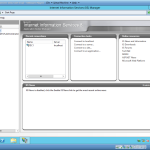
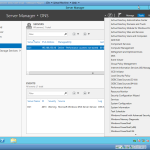
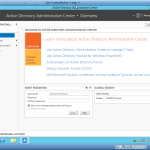
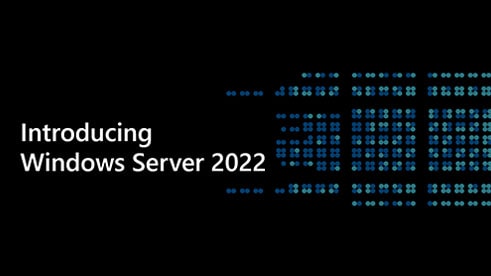


As far as I understand, this is a promo copy of Win Server which will stopr working on the release date (the same as Windows 8 promo), right?
That is correct Stuart. It is a 180 days evaluation version.
Hello Thomas, can you somehow extend this trial period of 180 days ?
Hi Radu
I think it is possible to extend the period with the slmgr.vbs -rearm command like in Windows 2008, but not sure with how much time you can extent it.
Thanks for the information Thomasa good review about windows server
Thank you Jenni.
I always thought that the new versions of software offer only a limited amount of updates, but Microsoft really did a good job at Windows Server 2012. Thanks for sharing these information !
Hi Rashmi
Windows server 2012 does really look good so far. The more I work with it the more I love it. It is however a bit weird to use the Tiles instead of the old desktop and start menu on earlier releases of Windows Servers. I have not yet seen a Tablet server 😉
Hey Thomas you always provide some unique information. The features of the new windows server 2012 are really great and just want to thanks you for such a great information.
sorry for my bad question, can i know what the different between windows server and the rest of the other windows like XP and 7
Hi Juan
There are two kinds of Windows Operating systems. There is Client OS and there is Server OS. Client OS are e.g. Windows XP, Windows Vista and Windows 7. A Server OS is a special computer that is always turned on sharing different kind of services like File Shares, Network printers or maybe a Mail server. Most companies have one or more servers to make these services available for their employee’s clients PC (Desktop or Laptops). Servers are kind of a must when many people have to have access to the same data on a network. I hope that was some kind of understandable 🙂
thanks for your clarification, maybe because i’m never handling such as server os that why i never understand what the different between 2 OS, thanks Thomas
I have never tried the windows server 2012 but I am very interested in experiencing the new version of Hyper-V.
Thanks for this Thomas!
You are welcome Shane.
I played around with the promo copy of 2012 and actually found it a little easier to use than 2003 and 2008. It was very surprising. I’ll be curious to see how it performs in a test -> production environment.
I’ve been using Ubuntu Server which works great only after you install an admin GUI to use with it. Do you know of any advantages of using Windows Server 2012 over Ubuntu Server? Thanks for the write-up!
Hi Jessica
I don’t have much experience with Ubuntu Server, but I guess that Windows Server 2012 offers better integration if you are using Windows client OS like Windows 7. Windows server gives a lot of options for central administration of share resources and security.
Hey Thomas! Great job on this article. Windows Server 2012 does have surprising new features. Windows never cease to amaze me! Thank you for writing this article.
Windows Server 2012 or Windows Server 8 is way better than the previous version. It’s much more efficient and simplified in many aspects. I’ve tried out the Hyper-V Replica feature, it makes things a lot easier with fault tolerance etc
Thanks For the update about Windows Server 2012 .But need some more days.
Thanks for this review about windows server 2012.Great information:)
Now Server admins can have fancy experience of metro style of desktop with tiles. I’m sure efficiency must have been improved in the new version.
For me it seems very weird to have a metro style desktop on a Windows server, but maybe I will get used to it.
Hi Thomas,
I learned something new regarding the Windows server. I haven’t been in touch with using it and this intro has helped me a lot in understanding the concept. Thanks.
Hi Vicky
I am glad that you learned something new today visiting my blog 🙂